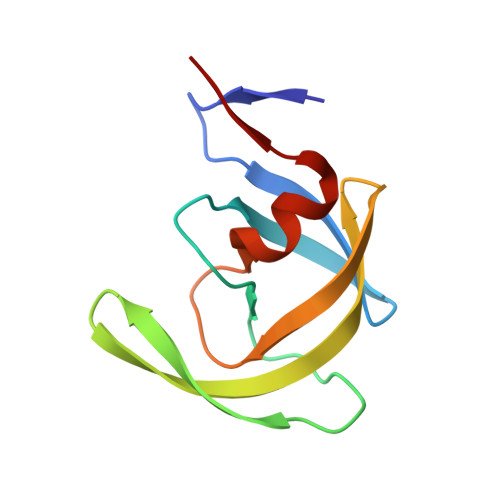Triggering HIV polyprotein processing by light using rapid photodegradation of a tight-binding protease inhibitor.
Schimer, J., Pavova, M., Anders, M., Pachl, P., Sacha, P., Cigler, P., Weber, J., Majer, P., Rezacova, P., Krausslich, H.G., Muller, B., Konvalinka, J.(2015) Nat Commun 6: 6461-6461
- PubMed: 25751579
- DOI: https://doi.org/10.1038/ncomms7461
- Primary Citation of Related Structures:
4U7Q, 4U7V - PubMed Abstract:
HIV protease (PR) is required for proteolytic maturation in the late phase of HIV replication and represents a prime therapeutic target. The regulation and kinetics of viral polyprotein processing and maturation are currently not understood in detail. Here we design, synthesize, validate and apply a potent, photodegradable HIV PR inhibitor to achieve synchronized induction of proteolysis. The compound exhibits subnanomolar inhibition in vitro. Its photolabile moiety is released on light irradiation, reducing the inhibitory potential by 4 orders of magnitude. We determine the structure of the PR-inhibitor complex, analyze its photolytic products, and show that the enzymatic activity of inhibited PR can be fully restored on inhibitor photolysis. We also demonstrate that proteolysis of immature HIV particles produced in the presence of the inhibitor can be rapidly triggered by light enabling thus to analyze the timing, regulation and spatial requirements of viral processing in real time.
Organizational Affiliation:
1] Institute of Organic Chemistry and Biochemistry, Academy of Sciences of the Czech Republic, Gilead Sciences and IOCB Research Center, Flemingovo n.2, 166 10, Prague 6, Czech Republic [2] Department of Biochemistry, Faculty of Science, Charles University in Prague, Hlavova 8, 128 43, Prague 2, Czech Republic.















